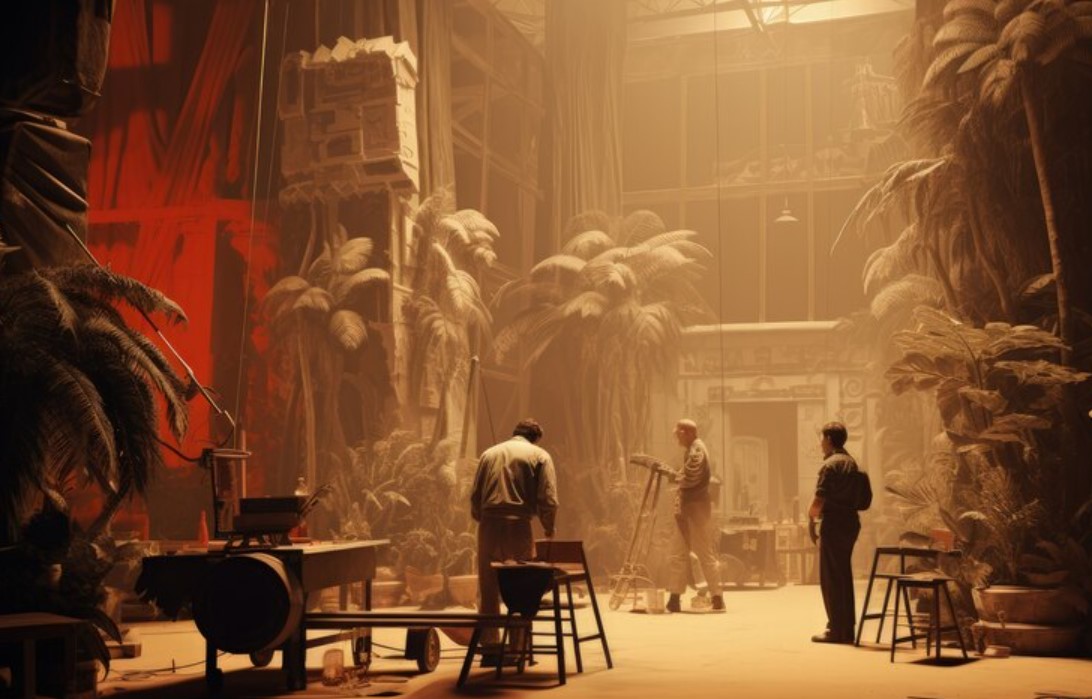The Rigid Reality: A Brief History of Traditional Denim
Before we dive into the world of stretch, let’s take a moment to appreciate the humble beginnings of denim. Originally designed as durable work wear, traditional jeans were made from rigid, 100% cotton fabric. These sturdy pants were built to withstand the rigors of manual labor, prioritizing durability over comfort.
While these classic jeans had their merits, they also came with limitations. Breaking in a new pair of rigid jeans was often a lengthy and uncomfortable process. Moreover, the lack of flexibility in the fabric restricted movement, making certain activities challenging. This set the stage for a revolution in denim technology that would change the game forever.
The Stretch Revolution: Introducing Elasticity to Denim
Enter the era of stretch denim. By incorporating elastane (also known as spandex or Lycra) into the cotton blend, manufacturers created a fabric that retained the classic look of denim while offering unprecedented comfort and flexibility. This innovation opened up a world of possibilities, particularly in the realm of fitted styles like stacked jeans.
The addition of stretch to denim wasn’t just about comfort; it also allowed for more diverse and figure-hugging silhouettes. Suddenly, jeans could contour to the body’s curves without sacrificing ease of movement. This breakthrough paved the way for the development of various stretch denim styles, including the popular stacked jeans that we know and love today.
Understanding Elastane Behind the Stretch:
At the heart of stretch denim’s success lies a remarkable synthetic fiber: elastane. This material, invented in 1958, possesses extraordinary elastic properties, capable of stretching up to seven times its length and bouncing back to its original shape. When woven into denim, even in small amounts (typically 1-3%), elastane imparts significant stretch and recovery properties to the fabric.
The science of integrating elastane into denim is a delicate balance. Too little, and the jeans won’t offer enough stretch. Too much, and they risk losing the authentic denim look and feel. Manufacturers have perfected this balance over time, creating stretch denim that maintains the classic appearance of jeans while offering enhanced comfort and flexibility. This technology has been particularly beneficial in the development of stack jeans, allowing for a close fit through the leg while maintaining the signature bunched effect at the ankle.
The Rise of Stacked Stretch Jeans: A Perfect Marriage of Style and Comfort
The advent of stretch denim coincided perfectly with the rise of stacked jeans as a fashion trend. Stacked jeans, characterized by their excess length that bunches or “stacks” at the ankle, require a close fit through the leg to achieve their signature look. Stretch denim made this possible, allowing for a snug fit that doesn’t restrict movement.
From stacked skinny jeans to stacked flare jeans, the incorporation of stretch has enabled designers to create a wide range of styles that cater to different tastes while maintaining the stacked effect. Even more unconventional styles like stacked camo jeans have benefited from stretch technology, offering wearers the perfect blend of edgy bb belt style and all-day comfort.
The Comfort Factor: How Stretch Enhances Wear ability
One of the most significant impacts of stretch denim has been the dramatic improvement in comfort. Traditional rigid jeans often required a “breaking in” period and could be restrictive, especially when sitting or bending. Stretch denim, on the other hand, moves with the body, providing immediate comfort and ease of movement.
This enhanced comfort has made stacked jeans more wearable for extended periods. Whether you’re running errands, working at the office, or enjoying a night out, stretch stacked jeans offer all-day comfort without sacrificing style. The flexibility of the fabric also means less strain on seams and stress points, potentially increasing the lifespan of the jeans.
The Fashion Evolution: How Stretch Enabled New Designs
The introduction of stretch to denim didn’t just improve existing styles; it opened up a world of possibilities for new designs. Designers could now create more figure-hugging silhouettes, experiment with extreme tapers, and play with proportions in ways that weren’t possible with rigid denim.
This innovation has been particularly impactful in the world of stacked jeans. The close fit required to achieve the stacked effect is much more comfortable and achievable with stretch denim. Moreover, the flexibility of the fabric allows for variations like stacked flare jeans, which combine a close fit through the thigh with a flared bottom, all while maintaining the stacked look at the ankle.
The Performance Aspect: Stretch Denim in Active Lifestyles
Beyond fashion, stretch denim has also made jeans a viable option for more active lifestyles. The increased flexibility allows for a greater range of motion, making stretch jeans suitable for activities that were once off-limits to denim wearers.
This performance aspect has been embraced by many brands, leading to the development of “performance denim” that incorporates additional features like moisture-wicking properties or enhanced durability. These innovations have further blurred the lines between fashion and activewear, allowing stacked jeans to transition seamlessly from casual wear to more dynamic settings.
The Future of Stretch: Innovations on the Horizon
As technology continues to advance, so too does the potential for stretch denim. Researchers and manufacturers are constantly exploring new ways to improve the performance and sustainability of stretch fabrics. From biodegradable elastane alternatives to smart fabrics that adapt to body temperature, the future of stretch denim is full of exciting possibilities.
These innovations promise to further enhance the comfort and functionality of stacked jeans and other stretch denim styles. As consumers become more conscious of sustainability, we can also expect to see a greater focus on eco-friendly stretch denim options, ensuring that our favorite jeans are not only comfortable but also kind to the planet.
Conclusion:
The introduction of stretch to denim, particularly in the context of stacked jeans, has truly revolutionized the way we think about and wear our favorite pants. From the enhanced comfort and flexibility to the new design possibilities, stretch technology has elevated denim from a sturdy workwear fabric to a versatile, fashion-forward essential.
As we look to the future, it’s clear that stretch denim will continue to play a significant role in the evolution of jeans. Whether you’re a fan of stacked skinny jeans, prefer the retro appeal of stacked flare jeans, or like to make a statement with stacked camo jeans, stretch technology ensures that you can do so in comfort and style. And let’s not forget the perfect finishing touch – a bb belt to complement your stretch stacked jeans and complete your look. The science of stretch has indeed changed the game, making our beloved denim more comfortable, versatile, and fashionable than ever before.




